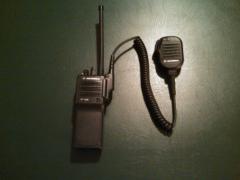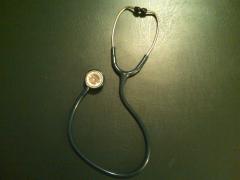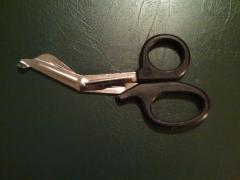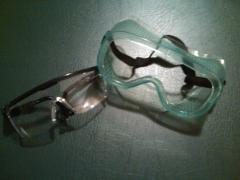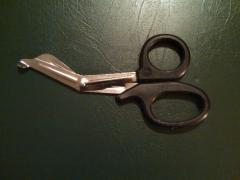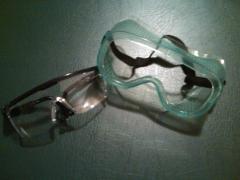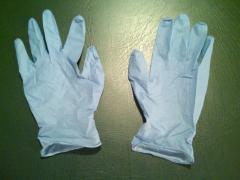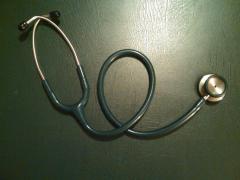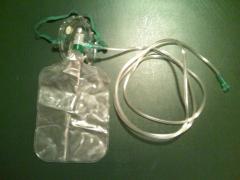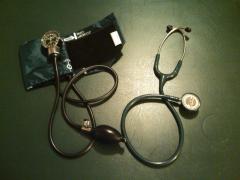
kbrozenick
Members-
Posts
23 -
Joined
-
Last visited
Previous Fields
-
Occupation
PHRN
Profile Information
-
Gender
Female
-
Location
Pennsylvania, USA
kbrozenick's Achievements
Newbie (1/14)
1
Reputation
-
kbrozenick started following Active Learning in the EMT-B Classroom
-
Active Learning in the EMT-B Classroom
kbrozenick replied to kbrozenick's topic in Education and Training
Another thing that we are using when they take their module exams the first 10 questions are all practical based questions. They are projected up on the screen via power point. For example a picture of a piece of equipment that they used in practical session, a picture of a patient in a specific position or a anatomy diagram with an arrow pointing to a specific structure. I was very amazed at how many people did not know what a piece of equipment was called that they had used in class and was lectured on extensively. I think this is a good thing to ensure your students are well prepared for the field upon completion of the class. -
Active Learning in the EMT-B Classroom
kbrozenick replied to kbrozenick's topic in Education and Training
I wanted to share some things that we have done in the classroom with our current class that seemed to work out well. 1. Using power point slides with blank boxes and projecting it on to the white board. Have the students fill in information that is missing in the slide. This works for things like signs/symptoms of a disease process, patient assessment algorithms or the components of the EMS delivery system. Pretty much anything that you can put up on the board they can go fill in. 2. They all had to find an appropriate size pair of gloves and were given some shaving cream to rub all over their hands. They then had to remove the gloves without getting shaving cream on them. 3. At the end of the well-being of the EMT chapter they were split into three groups. They were given a notecard with a specific situation on it. They had a bunch of PPE in the front of the classroom. Each team then had one minute to dress a "provider" in the proper PPE for the given situation. The equipment included, gloves, extrication gear, traffic vests, gowns, different types of masks, eye protection etc. They were given 3 different scenarios. This went quite well. 4. At the conclusion of the Medical, Legal and Ethical chapter they were given a handout with two separate scenarios. Using their books, notes and state protocols they had to go through the scenarios and answer the few questions after each one. Both scenarios dealt with DNR's, ethical dilemmas, confidentiality, HIPPA, consent etc. I tried to make sure each scenario had different aspects of the chapter in them. This was a good teaching tool however I misjudged the time to do them in class. They only ended up having 20minutes of class time to work on them. I asked them to try to contact their group members through e-mail and formulate a group response and be ready to discuss at the beginning of next class. Since it was so early in the class most ended up just formulating their own opinion at home. We did have a lengthy discussion the next class. Next time I will try to allot at least an hour for this assignment. 5. At the beginning of the anatomy lecture the students were split up into groups of three(this was a good number for our class of 18). After each system the groups had to do an activity based on what was just covered. The teams would accumulate points. The team at the end of class that had the most points were awarded 5 bonus points each. Once they caught on to the game it really made them pay more attention as we covered each section. Plus it broke up the lecture into some practical time. - Directional Terms - Each group was given a piece of paper with 3 different directional type words. Each member of the group had one minute to get in position of what they had. For example one post-it had anatomical position. Another post-it had "I am distal to the shoulder but proximal from the wrist. What am I? for either the elbow of the knee . Another post it had a position such as supine, prone or semi-fowlers. Again when they turned the paper over they had 1 minute to get in the appropriate positions. When the one minute was up they had to freeze. - Skeletal system - each group was given a piece of paper upside down that had 6 post it notes of different bones. They were told to not look until instructed. They were then told they would have one minute to place the post it notes on a selected "patient" of their group. Those who had the most right at the end were rewarded the points. This was quite interesting. They were not allowed to use their books or notes for this challenge. - Cardiovascular System - (This one they were told they could use their books and notes it did seem to be a little more challenging for them) They were given a form that was entitled trace a drop of blood through the body. There were some "givens" throughout the blanks and they had two minutes for this challenge. The team with the most correctly filled in blanks were rewarded the points for that section. ( I would change the time next time to about 3 minutes next time I do it.) - DIgestive System - This one incorporated the quadrants of the abdomen along with the organs in the abdomen. Again they were given a piece of paper upside down with 6 post it notes. 3 of them were organs found in the abdomen and 3 simple definitions of these organs purpose. We have 2 small boards and 1 larger board in the classroom. We divided those into 4 areas with a large + on each section. For the other two groups they were given half a piece of poster board with a + on it. Without using their notes they had 1 minute to label each quadrant with its appropriate abbreviation (RLQ... etc.) and place the appropriate organ and description in the proper quadrant. The one with the most correct got a point. They really seemed to enjoy this activity and it broke up the lecture. So far thats what we have been able to do. Next week we do vital signs and sample history. We are going to lecture on each particular vital sign and then let them practice in smaller groups that specific vital sign. We will have a total of 4 instructors for our group that is now at 16. This hopefully giving them ample opportunity to practice with supervision to ensure proper technique. After the completion of the lecture, they will pick a partner and take that persons vital signs. After they have those baseline vitals that "patient" will go run the steps several times. The other partner will then take there vital signs every 3 minutes until they return to baseline. After they have returned to baseline they will switch roles. Hopefully this will give them reps of taking vital signs on a patient with "abnormal" vitals. We will see how this goes. Will update to let everyone know how it goes. In addition to the above, we have tried to incorporate a lot of video's to go along with our lectures. There is a lot of good video on youtube. Its just a bit time consuming to find what you really want and that fits into your lecture. We are using course compass and have included discussion posts on certain topics along with course documents, chapter resources and study tips. So far that has been a great tool for class. Also we had set up a group facebook page, for the group to post pictures and what not. All the students in our class (from all age groups are on facebook except 1 person). That has proved to be a great tool, especially for the class to network a bit. -
I am confused by what you mean by a pre-test. Are you referring to a pre-test that involves knowledge of EMS and/or EMT-B related information? Or are you talking about a pre-test that is determining student academic aptitude? I am not sure in regards to specific EMS potential that a pre-test would be helpful at this level. At a EMT-A or Paramedic level sure, I think that would would be a helpful tool. However, at the EMT-B level I do not think that type of test would be very helpful. Now if your talking about reading comprehension and their ability to learn, I would definitely say yes to that type of pre-test.
-
How would you describe students today?
kbrozenick replied to EMS2712's topic in Education and Training
I think that this depends completely on the instructor and the training institute that is providing the education. Like all programs there are both good and bad. I think that you must tailor your classes to meet the needs of your students. Based on the fact that medicine is an ever evolving process, we currently are teaching based on a curriculum that was implemented in 1994! (Very happy that the new curriculum is in the process of being implemented) I think as educators we do have to use technology more frequently to keep up with the learning styles. Of course we have to base this technology use on your audience. I hear a lot of negativity about technology. Technology is not meant to replace knowledge. Technology is meant to assist the provider to provide excellent care. We need to continue to have high standards in our courses and turn out excellent providers! In doing so they will pass the test. I do wish however that the programs in the area would raise their standards on the students thats are accepted into the programs. It would maybe help a little bit. I think we just have to keep doing the best we can, and set the bar high and keep it there. Bring the students up to the bar not lower it for them. -
I think there is a place for apps. However, it is not a substitute for a student learning the material. There are apps that encourage people to study etc. Its all about balance.

